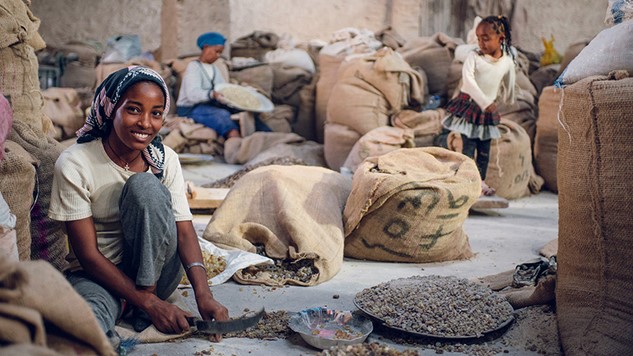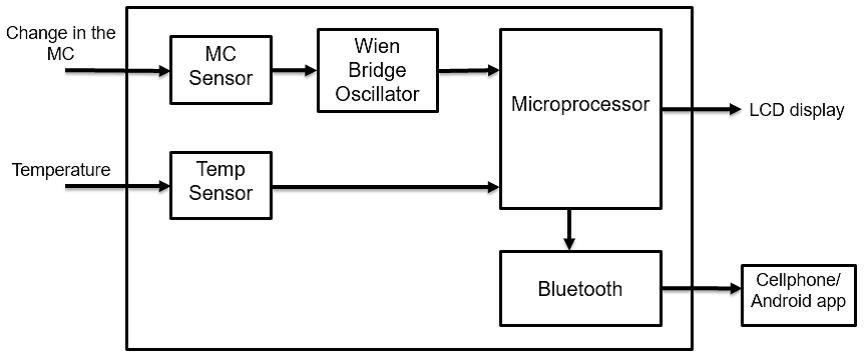Low-Cost Grain Moisture Sensor Networked to Smartphones
Purdue Collaborator: Agricultural and Biological Engineering


The Challenge: Quality Assurance in Post-Harvest Storage of Grain
Accurate moisture content (MC) determination is important in determining whether a crop has been dried properly for safe storage, transportation and processing. It is also used as a measure of quality and standardization in the trading of grains and other crops. Unfortunately, small and medium holder farmers and grain originators in developing countries in Africa, South East Asia and the Americas do not yet utilize moisture meters as a routine procedure for checking whether crops have been dried for safe storage. This places them at a disadvantage in trading their commodity to high value markets with large local and multinational corporations who have high quality standards and also need verification that the commodity being purchased has been adequately dried. Additionally, these high-ended markets, especially those for export to the EU or processing of children meals might require a means to trace back (product traceability) from where (product origin) the crop was purchased, should there be an issue with product contamination.
Currently, the portable hand-held meters in the market manufactured by well-known companies such as Deere & Company and Dickey-john are too expensive (about $300) and above the reach of small and medium holder farmers. More recently, a low-cost meter (about $100) has been developed by Dr. Paul Armstrong, an engineer with the USDA-ARS lab in Manhattan, Kansas. Other similar meters exist in China (our industry collaborator, TONFUS manufactures one of them). The USDA-ARS meter uses a probe to measure the relative humidity and temperature of the grain, and converts this to moisture content using the equilibrium moisture content/equilibrium relative humidity relationships for grain and air. MC readings can be read off the meter, after it has stabilized over a short period of time. However, there is no advisory system such as a decision support system (DSS) to inform a user, such as a smallholder farmer who lacks technical knowledge about whether the crop meets the required moisture standard or how far it is from the standard. While some meters like the one TONFUS manufactures have a voice readout that informs the user of the moisture content level, they still face situations where workers are bribed to manipulate the moisture data measured to be within the buyers recommended level when it is entered into the product delivery log manually.
The Purdue Innovation: Development of a Low-cost Grain Moisture Sensor Networked to Smart-phones
Ileleji (Purdue) and Bernal & Otero (University of Los Andes) have developed a moisture content meter system based on capacitance for measuring grain moisture. The uniqueness of our system is the ability to display MC in both an LCD on the device and by transmission to an Android smartphone. Preliminary calibration has been conducted for only corn. The total cost of the unit based on assembling one prototype at Purdue/Colombia (not including lab cost) was about $35.00 USD. With economies of scale, we envisage that the manufacturing costs could be further reduced. While the added feature of having the data readout on a smartphone is novel, we would like to improve this concept further by developing a commodity quality and traceability verification system, which allows the moisture data measured by the sensor via smartphone readout to be verified by a time, location and meter ID stamp that can be verified and traced back to the farmer or seller of that commodity. Also, the system will include a commodity quality DSS tool that informs the farmer or seller of the commodity whether the measured moisture meets the required delivery specifications. With wide cell phone connectivity in most developing countries, and cell phone penetration up to 80% in Africa, Asia and the Americas, the likelihood for adoption and use of such a system by a large population of farmers is high. China would be one of the potential markets, given that our collaborator TONFUS (http://www.tonfus.com/eindex.html) is based in Hangzhou, China and China routinely suffers from food contamination outbreaks. Currently, an IP disclosure is being pursued jointly with Purdue’s Office of Technology and Commercialization and the University of Los Andes.
Project Activities
- Design refinement and assemble prototype of the moisture meter for field testing (packaging, electronics and embedded systems design, etc. )
- Develop calibration for maize, sorghum, cowpea, sesame, coffee and cocoa
- Develop DSS tool for moisture meter
- Develop moisture verification and tracking tool
- Conduct alpha and beta testing in Nigeria and Ethiopia.

The Partners:
Purdue University, Universidad de los Andes, TONFUS
- Dr. Klein Ileleji, ABE, Purdue University
- Dr. Alba Graciela Avila Bernal, Universidad de los Andes
- Marisol Pantoja Otero, Purdue Alumna; Electronics Engineer, Universidad de los Andes
- Industry Collaborator: Dr. Hui Wang, Founder & CTO TONFUS Corp., China
